Osijek Celebrates International Drava River Day with Rich Program
September 25, 2021 - Osijek celebrated International Drava River Day on Friday, with many events that both entertained and educated locals on the importance of the Drava ecosystem.
The city of Osijek, Public Institution for Environmental Protection of Osijek-Baranja County, Osijek Tourist Board, Osijek-Baranja Tourist Board, Osijek-Baranja County's Development Agency are few of the ten organizers of Osijek's International Drava River Day commemoration program that was held on Friday.
International Drava River Day is marked on September 24, and as TCN wrote earlier this week, it was also celebrated in the city of Varaždin. The most diverse fish in Croatia live in the Drava river, and last week, UNESCO declared Mura-Drava-Danube Transboundary Biosphere Reserve.
Perhaps that is the reason why, as Akademija Art informs, this year's program in Osijek (the biggest city in the eastern Croatian region of Slavonia) is on a much higher level than usual.
From cruising on the left side of the Drava river, watching 5,000 rowing regattas to professional lectures on the Drava river by Dr. Mirna Habuda Stanić, citizens of Osijek had loads of interesting Drava-related things to see and do on Friday. Additionally, making carp fish on a stick (the specialty of the Slavonian cuisine) demonstration and the traditional Fiš Paprikaš (fish stew) topped off the event.
The celebration also opened a new chance for photographers in the area, as the Public Institution for Environmental Protection of Osijek-Baranja County holds a contest for their upcoming calendar. This is a good direction, as the commemoration program aims to promote the richness of cultural heritage and tradition in cooperation with the local population.
„It's important to mark all-natural values of our county for which we must take care of, as well as educating citizens on environmental protection, starting from the smallest ones,“ said Osijek-Baranja county deputy chief Josip Miletić, as quoted by Akademija Art.
The busy program also made time for the presentation of the Amazon of Europe Project with the idea of preserving the aforementioned biodiversity of the UNESCO-protected Mura-Drava-Danube Transboundary Biosphere Reserve.
„Despite numerous man-made changes in the past, this stunning river landscape hosts an amazing biological diversity and is a hotspot of rare natural habitats such as large floodplain forests, river islands, gravel and sandbanks, side branches, and oxbows", says the Amazon of Europe website.
Learn more about Osijek in our TC guide.
For more about biodiversity in Croatia, follow TCN's dedicated page.
Vučedol Archaeological Park to be Backbone of Slavonia and Baranja Tourism
September 19, 2021 - The Vučedol Archaeological Park project was presented at the Museum of Vučedol Culture to introduce the events that will follow in the next two years.
Namely, this extensive project includes the construction, reconstruction, and revitalization of the archeological site, communal and catering infrastructure, and the tourist promotion of the entire project on an area of slightly more than 28 hectares, reports HRTurizam.
“The Vučedol Archaeological Park project is conceived as a platform, backbone, and initiator of a complex program of systematic interdisciplinary research of the Vučedol archaeological site, which expands the area of Vučedol. It presents as an archeological-historical, but also a tourist-catering and sports-recreational center," said the director of the Museum of Vučedol Culture, Mirela Hutinec.
At the future site, there will be a planetarium, info point and scientific research center, restaurant, area for the presentation of Vučedol livestock, a museum square, Vučedol labyrinth and children's playground, reconstruction of the Megaron and Vučedol settlement, a stilt house on Orlov otok, and passenger and communal port for boats. These are big plans that, once realized, will be the backbone of tourism in Slavonia and Baranja and an important place for scientists and researchers.
The project's specific objectives are preserving the Vučedol archaeological site and enriching the cultural (archaeological) and tourist offer by using creative, innovative, and technologically advanced solutions in education, presentation, and promotion of the Vučedol Archaeological Park.
The partners of this vital project are the Croatian Ministry of Culture and Media, the City of Vukovar, the Public Institution Port Authority of Vukovar, and the Vukovar Tourist Board. The project value is 117,299,998.51 kuna, of which 85%, or 99,704,998.72 kuna, are grants from the European Regional Development Fund.
In the entire locality of Vučedol, after 40 years of systematic research, only 10 to 12% of the area has been explored. So, we can still expect new knowledge about the Vučedol culture.
"In Europe, the highest level of civilization was developed by the Vučedol culture, which began here on Vučedol around three thousand years ago. As far as we know, this is the oldest locality of the Vučedol culture, and everything started from this area. Here we have the oldest Indo-European calendar, excavated at the site in Vinkovci. If we can recognize and read it, then we have the oldest pictorial letter of Indo-Europe," said Professor Aleksandar Durman, who has been working on researching Vučedol culture for many years.
For more on travel in Croatia, follow TCN's dedicated page.
Slavonian Confectioners Trained Up at Famous Paris Le Cordon Bleu
August the 20th, 2021 - Several Slavonian confectioners have undergone specialist training at no less than the world-famous Académie d’Art de Paris Le Cordon Bleu in the glamorous French capital.
As Poslovni Dnevnik/Marta Duic writes, the Regional Centre of Competence (RCK) of the Hospitality and Tourism School from the Eastern Croatian City of Osijek is now richer for six Slavonian confectioners and chefs who underwent a seven-week training at the aforementioned institution.
The training in question was realised within the project activity of the RCK Catering and Tourism School from Osijek in the project VirtuOS - the establishment of the RCC in the tourism and catering sector, which is financed by funds from both the European Union (EU) and the Croatian state budget.
Ivan Kelava and Damir Abramic, teachers of cooking at the Osijek Catering and Tourism School, Robert Batrac, mentor to students from Hotel Osijek and Ruzica Sosic, Dunja Culjak and Sasa Beslic, confectionery teachers from the partner Vinkovci Secondary Vocational School, received this specialist French training and education.
At the academy, the group of Slavonian confectioners and chefs had the opportunity to learn from renowned French chefs who had gained their experience and vast knowledge in world-famous Michelin-starred restaurants. This newly acquired knowledge from the French capital of Paris will be passed on by Croatian teachers to their colleagues, used when teaching students, and also in creating new curricula and programmes.
Namely, the Osijek RCC points out that the training of their teachers and mentors is the cornerstone and foundation of quality education and the promotion of this sort of profession.
The establishment of the Regional Competence Centre will improve vocational education in the tourism and hospitality sector in Croatia, and grants of 95,673,388.62 kuna from the European Regional Development Fund and the European Social Fund have been provided for the involved projects.
For more, follow our lifestyle section.
Feravino Winery Has Plan to Change People's Perception of Slavonia
August the 12th, 2021 - Slavonia has unfortunately always been overlooked. With tourism still very much focused on the coast, even Zagreb continues to live in the Adriatic sea's shadow. Eastern Croatia can barely get a look in and Slavonian wine is often referred to as cheap. Could that all finally change with the Feravino winery's Slavonia-oriented projects? Maybe.
As Jozo Vrdoljak/Novac writes, back at the beginning of last year, in cooperation with the consulting company BlueRock Consulting, a strategy was developed for the development and long-term sustainability of Feravino, and consequently Fericanci in Slavonia as a destination.
The new vision of growth and development defined by the strategy undertaken by Feravino has the main goal of transformation into a modern boutique winery. In addition to the vision, the need for serious rebranding and new positioning was recognised because, given the complex market and the demands of today's consumer, Feravino faced significant challenges that need to be overcome. As such, Enosophia was created, a new brand that represents a new direction of the development of Feravino based on the long tradition of those vineyards, as well as investment, innovation, boutique production and a focus on quality.
A significant step forward
''The whole story began when we realised that we have to adapt and change in order to be able to alter our own perception on the one hand and the perception of Slavonia and Slavonian winemakers on the other. We saw the problem of the negative perception faced by Slavonian winemakers and the perception of Slavonia as a region where cheap wines are produced.
We decided to take these problems seriously, realising that we needed a strategic approach and a complete solution to tackle this issue. The result is a new development strategy, the development of which we worked on with expertsm'' said Ivan Maricic. With partners from the Bruketa & Zinic & Gray agency, the process of rebranding the Feravino winery has begun. A new brand architecture has been created with a new visual identity, and all the products it will launch in the coming years will also have a new air about them.
''Surrounding ourselves with the best in the industry, we've created a new brand that will be able to carry everything we've done so far and realise all our plans and ambitions. This is how Enosophia, our wisdom of wine, was created,'' explained Ivan Maricic.
The Feravino winery's brand new strategy implies a significant step forward in terms of wine production in the premium category, which ultimately aims to increase the share of sales in the higher price segment, especially the HoReCa channel. The strengthening of their portfolio with high-quality wines has also been confirmed by the first two brands of Enosophia, Grasevina TRS no. 5 and rose Matarouge. These are wines with which the Feravino winery wants to interest a younger audience. This is to be achieved by an innovative interactive label, the first of its kind in the Croatian wine industry. Intensive work is also being done on the development of more new products.
One of the most important projects for the adopted strategy is the development of continental tourism and Fericanci in Osijek-Baranja County as a destination. It is part of the holistic approach of the new winery, which, in addition to the excellence of the product itself, implies care for people, sustainable development and the proper positioning of Slavonia.
''Our idea isn't only to be among the best wineries in Croatia, but also a winery that will make Fericanci a desirable tourist destination and attract young people to return or come to live in Slavonia,'' emphasised Ivan Maricic.
Heritage hotel
The plan is to build a wine hotel with a capacity of 60 to 80 rooms, which will be built on the site of the old cellar.
''We'll set up a restaurant with all of the associated facilities in the vineyards, as well as some additional accommodation. Recently, we've had some horses and a stable built next to the location of the future wine hotel, which will further complete the future tourist offer,'' explained Maricic, adding that the value of these projects stands at over 20 million euros.
''We're also actively working on the construction of a heritage hotel, which will be realised with the restoration of the Mihalovic mansion. The project is worth six million euros and the hotel should be completed in the second half of 2022. It will be one of the more luxurious hotels in Croatia with fewer accommodation units, but with rich accompanying facilities,'' stated Maricic.
Along with tourism projects, the reconstruction and upgrade of the Feravino winery itself is planned, including the construction of a tasting room and showroom, with additional storage capacities. It is also a large investment, worth about five million euros in total.
''Over recent years, we've worked hard on raising new plantations and converting our vineyards. The conversion, which is the replacement of old vineyards with new ones, was done with the help of funds from the Wine Envelope, ie with cash from European Union (EU) funds. Last year, investments were completed in two new cellars, for fermentation and wine aging. One has a capacity of 570,000 litres of stainless steel containers, and the other 147,000 litres of large wooden barrels.
In total, more than five million euros have been invested in these projects in the Feravino winery in the last three years alone. We'd also like to emphasise our investment in new equipment for the production of sparkling wines,'' Maricic concluded.
For more, follow Made in Croatia.
Cultural Identity of Vukovar: New Book Presented in Vukovar
June 9, 2021 - The fascinating question of the Cultural Identity of Vukovar is researched in a new book edited by Dr. Mateo Žanić and Petar Elez. However, as the editors stressed in the introduction, further research is needed to encompass all social groups in Vukovar and their contribution to the heritage of Vukovar.
After being published back in April this year, the book „Cultural Identity of Vukovar – Contribution to Investigating Heritage and Successors“, was presented this Wednesday in Vukovar. As Ivo Pilar Social Research Institute writes on its website the book was published in cooperation with the Vukovar State Archive, so it was only suitable that the first book presentation was held in Vukovar at the videoconference hall of College Of Applied Sciences „Lavoslav Ružička“ (named after a famous Croatian chemist whose work is awarded a Nobel Prize). In addition, the event marked International Archive Day.
The book was edited by Dr. Mateo Žanić and Petar Elez, and the presentation, alongside editors, saw scientific experts Dr. Dražen Živić, Mirela Hutinec, and Dr. Domagoj Tomas talks about the book.
„Fast events triggered by globalization process and information revolution which paradoxically lead to today's societies being fiercely occupied with the meaning of past, and preserving its valuable traces. In that context, there is a spreading interest for heritage that holds an important component to understand the relationship between the past and present“, says the editorial introduction of the book.
The editors went on to explain how „the city proved to be futile to interpret the meaning of heritage and its contribution to cultural identity,“ and the editors wanted to present various aspects of Vukovar's cultural heritage.
Apart from editors Žanić (who wrote a chapter „Layers of memories and material heritage in modern-day Vukovar) and Elez (author of the chapter „State archive in Vukovar and development of archive service in Vukovar-Srijem County“), the book features eight more authors. Ivan Rogić (Whose Heritage? Who is the successor?), Dražen Živić (on Vukovar's feudalists), Vlasta Novinc („Danube, food, Corso“), Dragana Drašković (on the cultural life of Borovo Selo), and more by Dragan Damjanović, Toni Roca, Ivana Bendra and Ivan Hubalek.
With these broad presentations of culture and heritage in Vukovar, editors hope this book will encourage further research as they are aware this is certainly not the final word on these interesting questions and issues.
„As editors, we are aware that the book does not deal with topics that concern different social groups that left their trace in Vukovar end enrich the history of the city. We hope that future editions that will deal with this topic expand the reach of issues and help us to realize better what do we inherit from the past and why is that important“, concludes the introduction of the book.
So far, the book is available only in Croatian, and research that will, as editors say, deal with other social groups in Vukovar is yet to come. Keeping in mind the terrible aftermaths of the war in Vukovar in the 90s and inter-ethnic tensions, further findings on joint cultural contribution to Vukovar may indeed be the enlightenment needed for peaceful cohabitation and development of Vukovar as a perspective city in Croatia.
Speaking of heritage, learn more about UNESCO recognized heritage in Croatia on our TC page.
For more about science in Croatia, follow TCN's dedicated page.
Brod-Posavina Tourist Board Introduces New Visual Identity
June 4, 2021 - At a special event, the Brod-Posavina tourist board officially unveiled its new logo, which seeks not only to renew its visual identity but also to adequately represent the county's values.
Traditional architecture, excellent gastronomy, the Sava River, and the border history of the Brod-Posavina region are the foundation of a new, modern visual identity of the Brod-Posavina Tourist Board, reports hrturizam.hr.
The basic element of the logo is dark blue and reminiscent of the Sava River, it is made in the rotated form of the initial letter of the county, and stylized elements in warm colors represent the windows of the barn, which still adorns almost every yard in this part of Croatia.
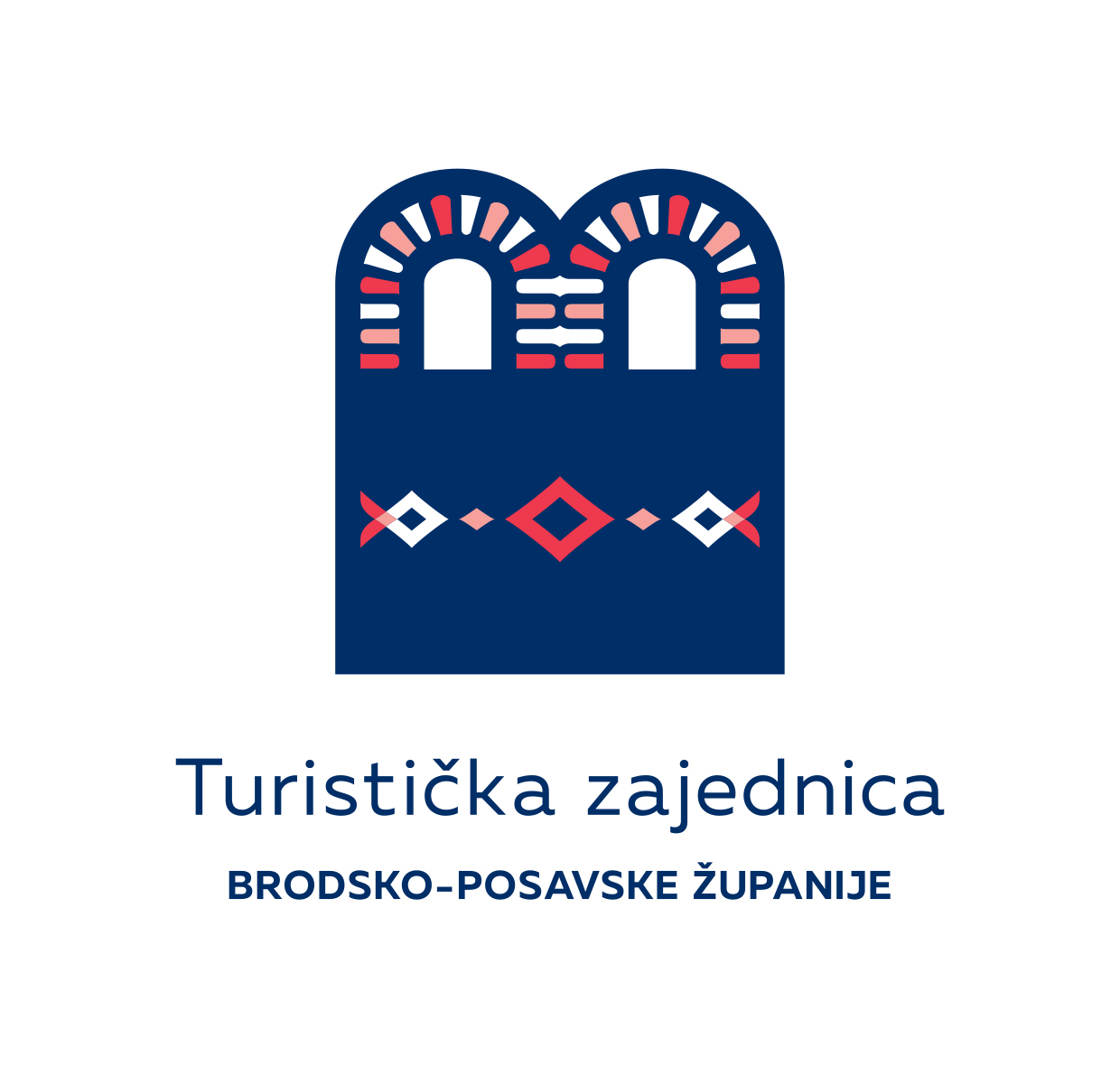
"The new logo is decent and modern at the same time, it is applicable in its original form and in a modular way and reflects a new experience of the traditional values of our region. It is based on the Strategic Marketing Plan of Slavonia Tourism from 2019 to 2020 with a branding plan, funded by the Ministry of Tourism and Sports and in which our area is described as a meeting of worlds and cultures'', said Ružica Vidaković, director of Brod-Posavina County.

The basic logo is joined by three more variants with the slogans Guardians of Nature, Guardians of Heritage, and Guardians of Taste.
Thus, the strongest tourist trump cards are united, which are based on the historical fact that the inhabitants of this part of Croatia were border guards. In this context, the word guards are in itself warm and evoke positive emotions.
"Modern visual identity confirms how important strategic documents are and gives the best answer as to why they are made. This is an excellent example of the implementation of the Strategic Marketing Plan of Slavonia Tourism in practice", concluded Sandra Herman, State Secretary at the Ministry of Tourism and Sports.
The Lollipop communication team of Elizabeta Penić and Alma Radoš, who are signing the conceptual design and creative communication and branding of the new visual identity, was joined by graphic designer Vedrana Knez as the author of the visual identity.
Follow the latest on flights to Croatia HERE and the latest travel updates and COVID-19 news from Croatia HERE.
For more on travel in Croatia, follow TCN's dedicated page.
OPG Čudesna šuma: Paradise Reimagined in Beautiful, Traditional Baranja
May 13, 2021 – OPG Čudesna šuma: How an unexpected turn of events helped world-renowned photographer Mario Romulić realise his lifelong dream.
War and genocide and the aftermath. Famine. Disease. Death. In a former life, harrowing images filled the lens of internationally renowned photographer Mario Romulić. But thankfully, we're now far from such scenes.
In fact, at OPG Čudesna šuma - Mario Romulić's home and family farm - we're pretty much far from everything. One other eco-farm is his only neighbour. Well, unless you count the llamas the Romulić family keep out back. Occasionally, through the rich green of surrounding trees, you see birds flying above the branches. Probably they're toing and froing from Kopački rit. The nearby Nature Park is less than a kilometre from OPG Čudesna šuma. Famously, the wetlands are home to over 250 species of birds. They are also the reason why Mario Romulić is here.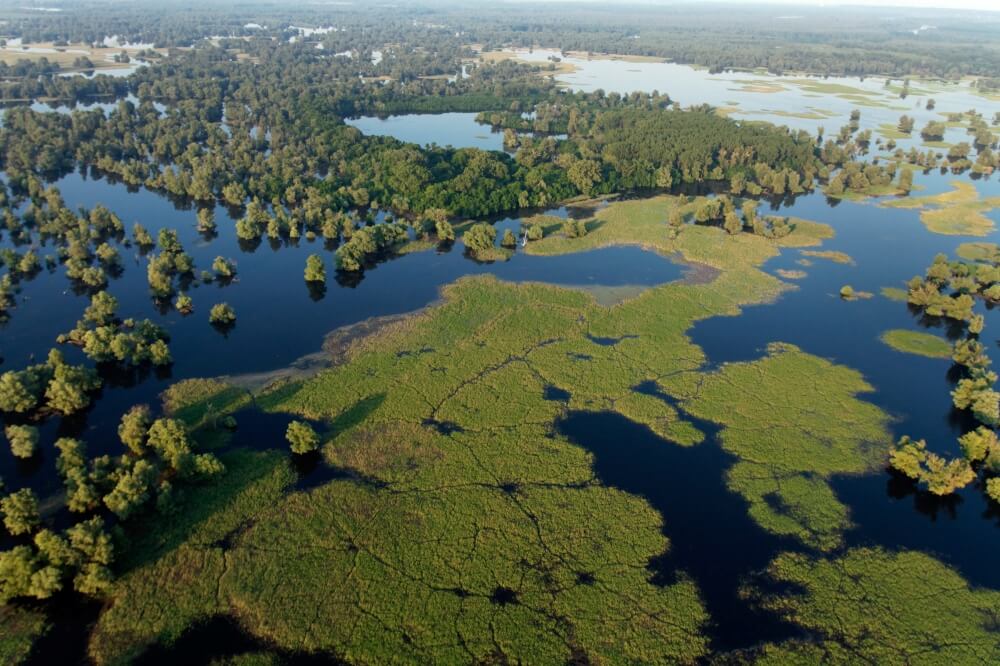 Kopački rit Nature Park © Kopački rit Nature Park.
Kopački rit Nature Park © Kopački rit Nature Park.
“Back then, I was very occupied with Kopački rit,” remembers Mario of the time, 21 years ago, when he moved to what is now OPG Čudesna šuma. “I was working as a cameraman for people like Reuters, all over the world. The assignments would last 7-10 days and I'd be in places like Afghanistan, Rwanda, Congo, Liberia, Bosnia. It was often quite dangerous. For the next 20 days, I would spend a lot of time in Kopački rit, trying to calm my nerves. It was something like a cure after seeing all these horrible scenes. Eventually, instead of travelling every day from my home in Osijek to Kopački rit, I decided to try and find something close by. And this is what I found.”
Just as this beautiful, natural landscape in Bilje, Baranja once served as a peaceful getaway for Mario Romulić, his OPG Čudesna šuma today does the same for others. Because, after dreaming for two decades of turning this blissful plot and homestead into a forest farm and eco-village, Mario Romulić is finally turning that vision into a reality.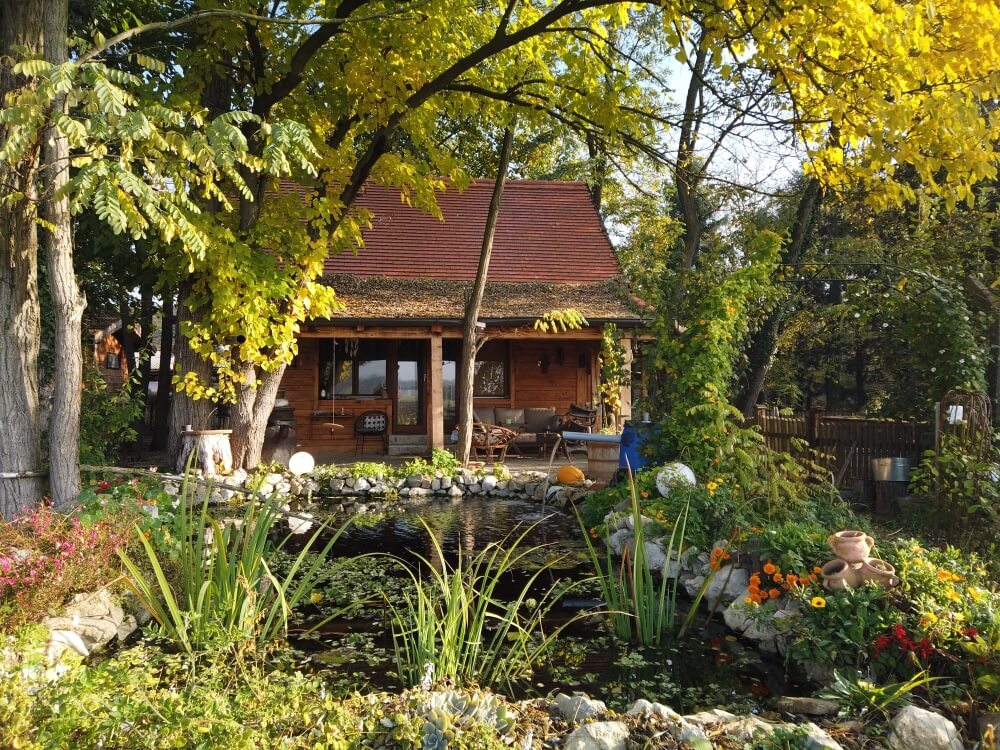 The impossibly pretty OPG Čudesna near Kopački rit Nature Park, Bilje Municipality, Baranja © OPG Čudesna šuma.
The impossibly pretty OPG Čudesna near Kopački rit Nature Park, Bilje Municipality, Baranja © OPG Čudesna šuma.
“Because of my job - first, travelling all around the world, then travelling Croatia - I did not even have much time to think about it, let alone do it,” says Mario. “But, then Corona came. Finally, I found myself at home. At last, I had time to work on my dream.”
OPG Čudesna šuma in the Month of Baranja Cooking (Mjesec baranjske kuhinje)
A group of 30 or so are Mario's guests today at OPG Čudesna šuma. They're here for a presentation of speciality cooking. It's the grand finale of the Month of Baranja Cooking (Mjesec baranjske kuhinje).
Over previous weeks, OPGs from all across the region have welcomed guests to try goulash, soups, stews, perklet and other traditional foods of the area. While visiting, they've been embraced by the beautiful landscape of Baranja. Not only have they discovered how this delightful, distinct cuisine tastes, but also they've learned exactly how it's prepared. However, they've evidently saved the best for last. On the menu today, river fish inventively cooked, accompanied by a riotous rainbow of seasonal vegetables.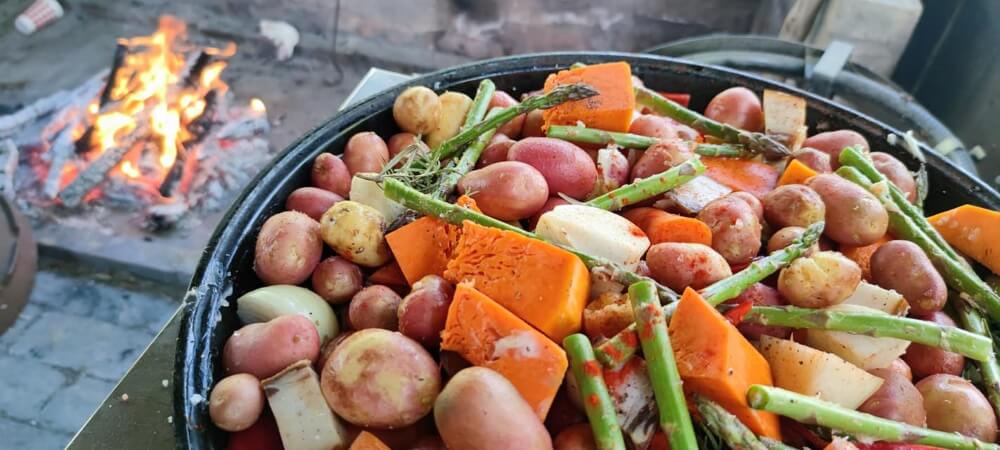 Seasonal vegetables of Baranja in springtime at the Month of Baranja Cooking (Mjesec baranjske kuhinje) © OPG Čudesna šuma.
Seasonal vegetables of Baranja in springtime at the Month of Baranja Cooking (Mjesec baranjske kuhinje) © OPG Čudesna šuma.
It's a beautifully sunny day, right at the start of May. It depends on your preference, but looking across this happy vista in the glorious sunshine, it's difficult to imagine this not being the perfect time to be in Baranja. Young children are raised to chest height by their parents so they can meet Mario's free-roaming llamas face-to-face. The children's faces flit between surprise, curiosity and delight. The llamas return their stare. They're used to welcoming new guests.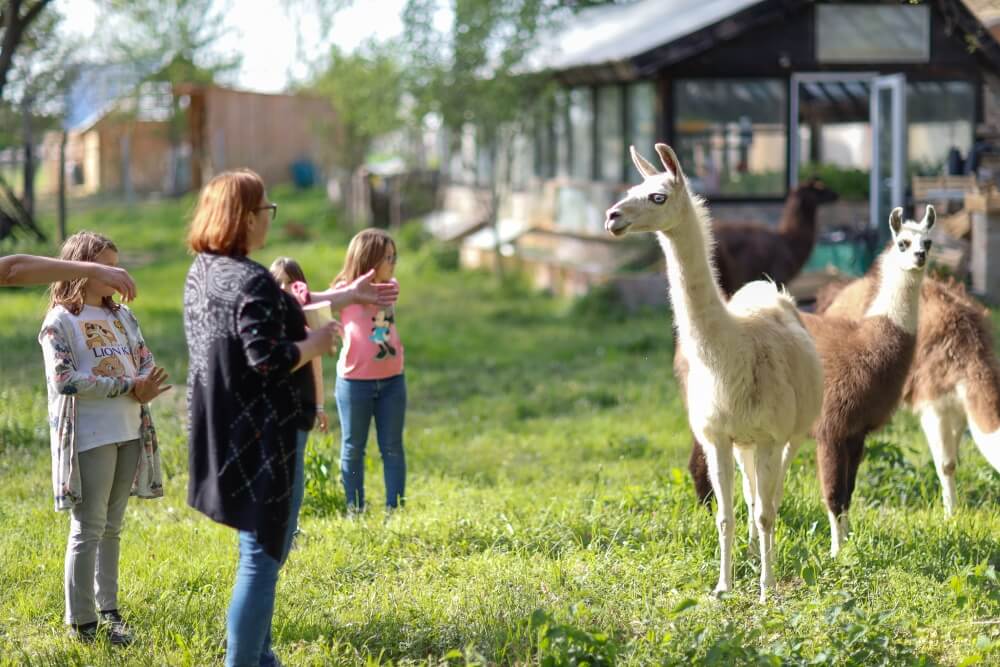 Meeting the Romulić family llamas at OPG Čudesna šuma © Turistička zajednica Općine Bilje - Kopački rit.
Meeting the Romulić family llamas at OPG Čudesna šuma © Turistička zajednica Općine Bilje - Kopački rit.
Partially shaded by trees, the smiling adult guests sit casually on wooden benches around a central, outdoor cooking area. Several open fires display a range of traditional cooking methods. Steam rises from a cast-iron stove suspended over one. Beneath the vapours, you can make out the dish is fish paprikash. It's unmistakable because of the deeply red coloured bubbles, a result of generous amounts of paprika.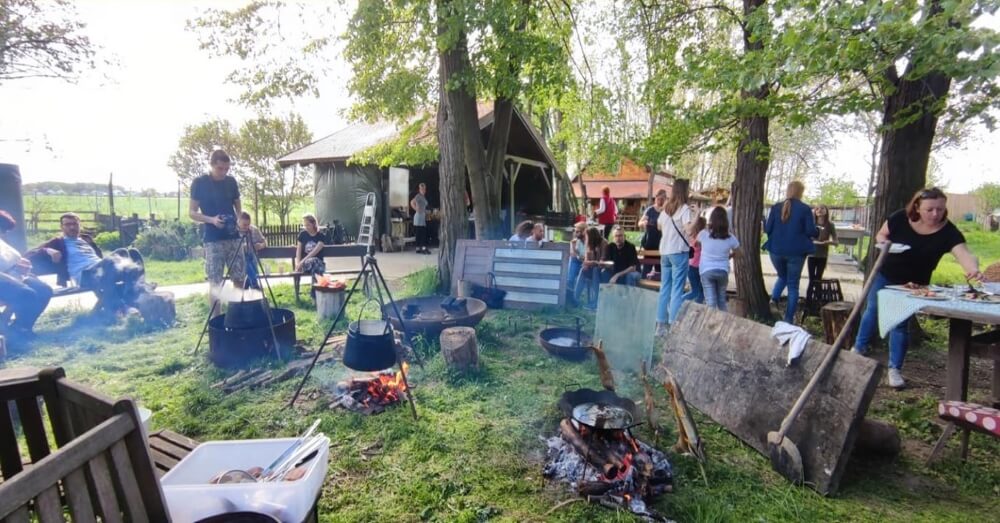 Guests enjoy a warm springtime day at OPG Čudesna šuma during the Month of Baranja Cooking (Mjesec baranjske kuhinje), as fish paprikas cooks over an open fire © OPG Čudesna šuma.
Guests enjoy a warm springtime day at OPG Čudesna šuma during the Month of Baranja Cooking (Mjesec baranjske kuhinje), as fish paprikas cooks over an open fire © OPG Čudesna šuma.
A huge bag of this paprika sits propped up, close by. It's from another organic OPG, just a kilometre or so from here. The colour is vivid, impossibly red, unrecognisable from anything store-bought. At the next fire, pike impaled on wooden sticks are placed far enough from the flickering flames so they cook slowly and do not burn.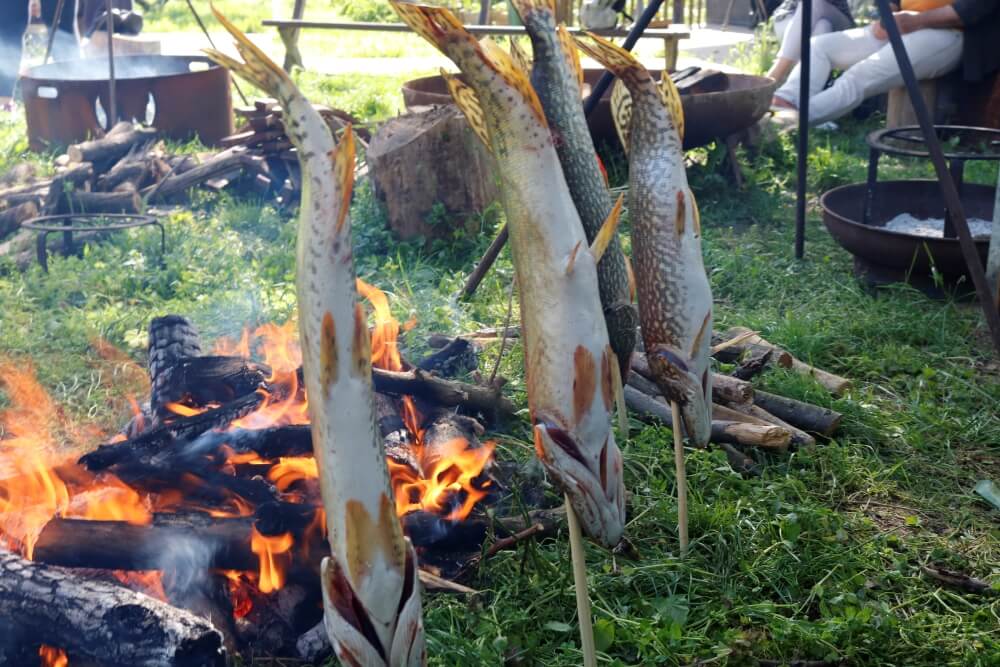 Pike impaled on sticks, cooking by an open fire at OPG Čudesna šuma @ Marc Rowlands.
Pike impaled on sticks, cooking by an open fire at OPG Čudesna šuma @ Marc Rowlands.
In the outdoor kitchen, Mario Romulić's co-chefs prepare an unending supply of fish dishes and vegetables. Carp, catfish, trout, bream. There's a bounty of fresh asparagus. It's that time of year. With the restraint of experience, they've cooked it perfectly. After the crunch of the bite, the flavour explodes. They're seasoned simply – delicious olive oil and sea salt.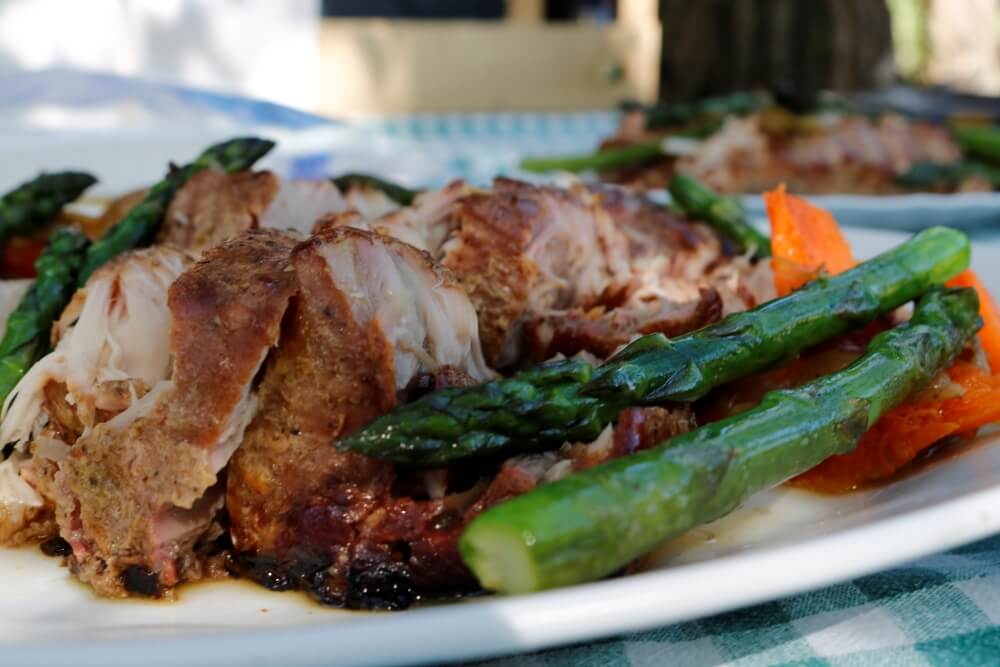 Seasonal asparagus, perfectly cooked, served with smoked river fish © Marc Rowlands.
Seasonal asparagus, perfectly cooked, served with smoked river fish © Marc Rowlands.
A group of peers – accomplished chefs from Osijek-Baranja restaurants – peak over the shoulders of Romulić's co-chefs. They're admiring the inventive techniques employed. Although, being chefs, they can't help themselves. They end up briefly forgetting their families in order to help out.
Mario Romulić, the host with the most
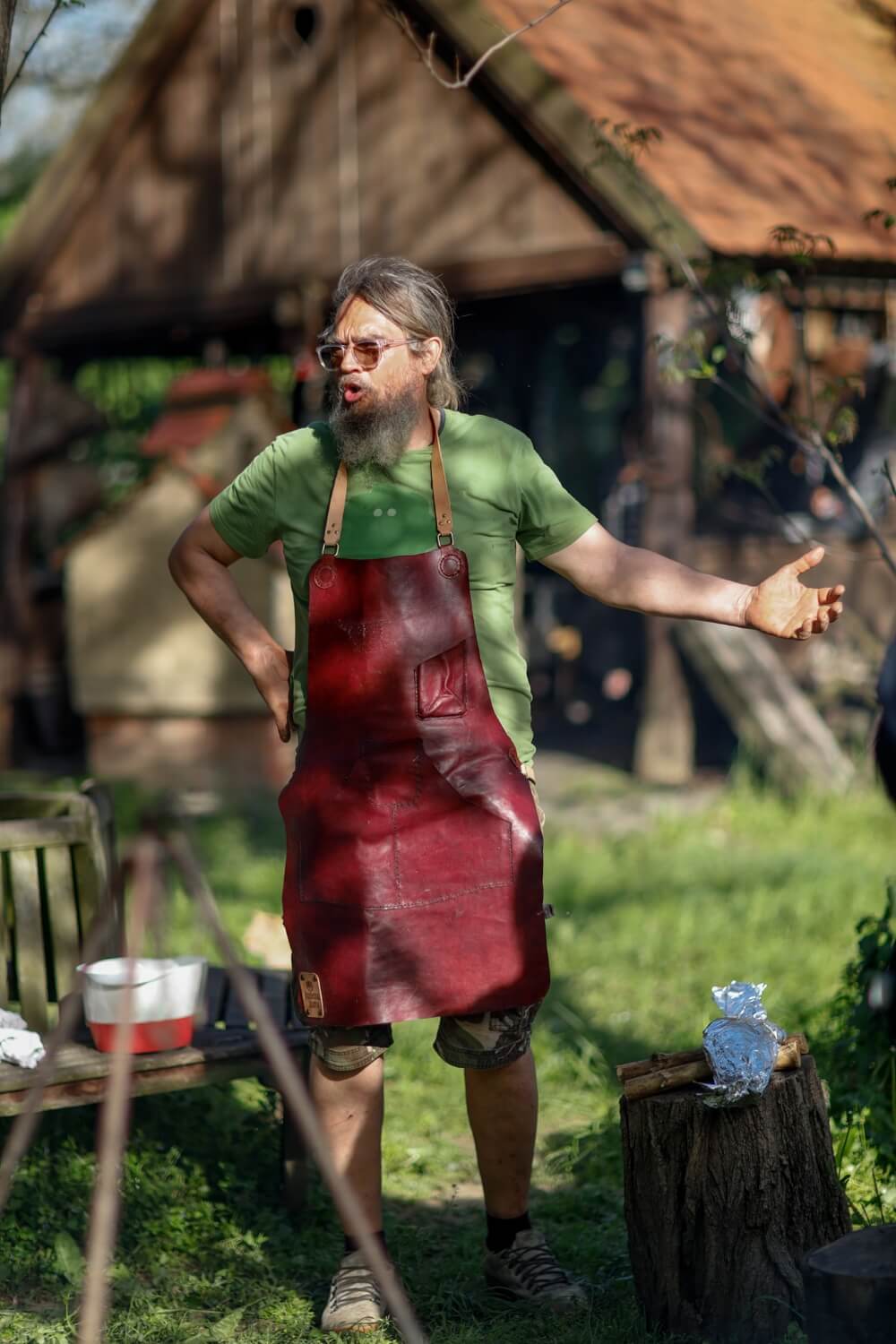 Mario Romulić © Turistička zajednica Općine Bilje - Kopački rit.
Mario Romulić © Turistička zajednica Općine Bilje - Kopački rit.
After all the guests arrive, Mario Romulić holds court. Cheerily he welcomes us all to OPG Čudesna šuma and the event. Without question, the success of rural, village tourism depends on the personalities of the hosts. It's no good plonking a group of visitors in a pretty place and throwing some food in front of them. We've all seen trees, grass and food before. Rural tourism is not just about the place, it's about the experience, the ambience. And, especially, it's about the people.
Hands down, the OPGs of Slavonia and Baranja are the best in Croatia at this. The folks here are famous for their friendliness, warm welcome and big personalities. And, Mario Romulić has one of the biggest of them all.
In the research for this reportage, looking back at archive pictures of Mario Romulić is startling. During his years spent as an international photographer, he himself has been photographed many times – on assignment in distant countries, at the opening of exhibitions that have showcased his celebrated work. In most, there's an intensity to his stare. It's sometimes difficult to look at. He looks like a man who has tales you never want to hear, like a man who has seen too much.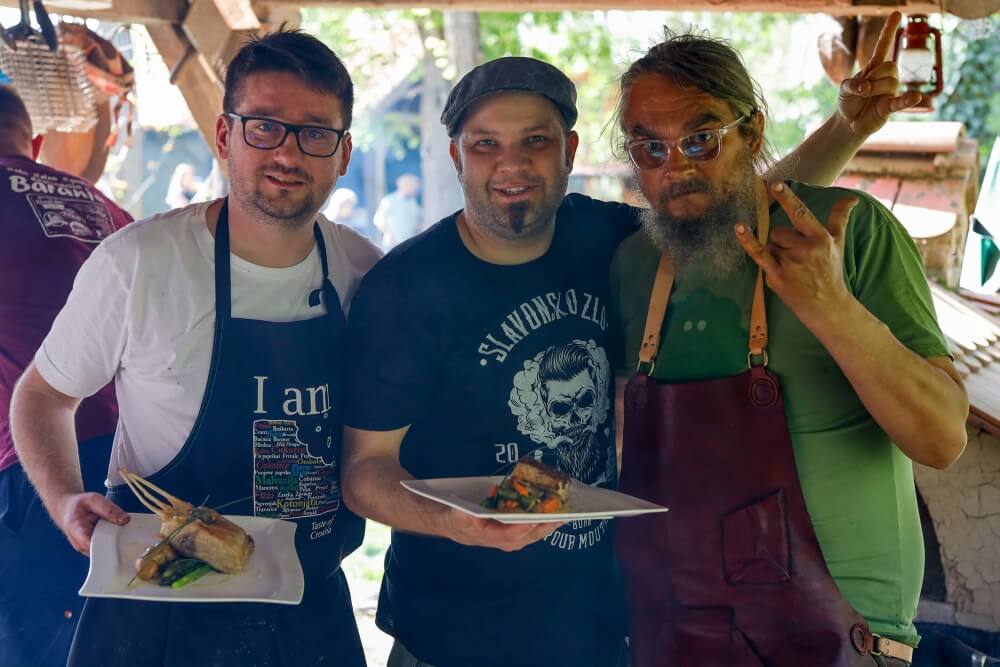 (L- R) OPG Čudesna šuma co-chef at the event Mihael Tomić, renowned Osijek chef Ivan Đukić currently of Osijek's Lipov Hlad and a happy Mario Romulić © Turistička zajednica Općine Bilje - Kopački rit.
(L- R) OPG Čudesna šuma co-chef at the event Mihael Tomić, renowned Osijek chef Ivan Đukić currently of Osijek's Lipov Hlad and a happy Mario Romulić © Turistička zajednica Općine Bilje - Kopački rit.
By comparison, the Mario Romulić that welcomes us at OPG Čudesna šuma today is unrecognisable. Sure, there's a little more grey to his long hair and beard but, otherwise, he looks incredibly healthy and happy. The intense stare is gone, replaced by a warm, wide smile that shows across his entire face. Even in early May, he has a darkened skin tone, the telltale signs of a man who spends much of the day outdoors. Romulić's enthusiasm for his guests and the event is palpable. After his sincere welcome, this enthusiasm is immediately transferred to each of his guests.
Mrs Romulić ensures everyone's glass is overflowing with wine or juice. One of Mario's teenage sons helps out with the food, while the other is taking photographs of the event. Well, someone has to do the photography now that dad wants to be a chef and host! Mario himself is engulfed in smoke. Among the other duties he's assumed today, Mario is tending a smoker. Without a doubt, this is the most revelatory cooking method we meet today.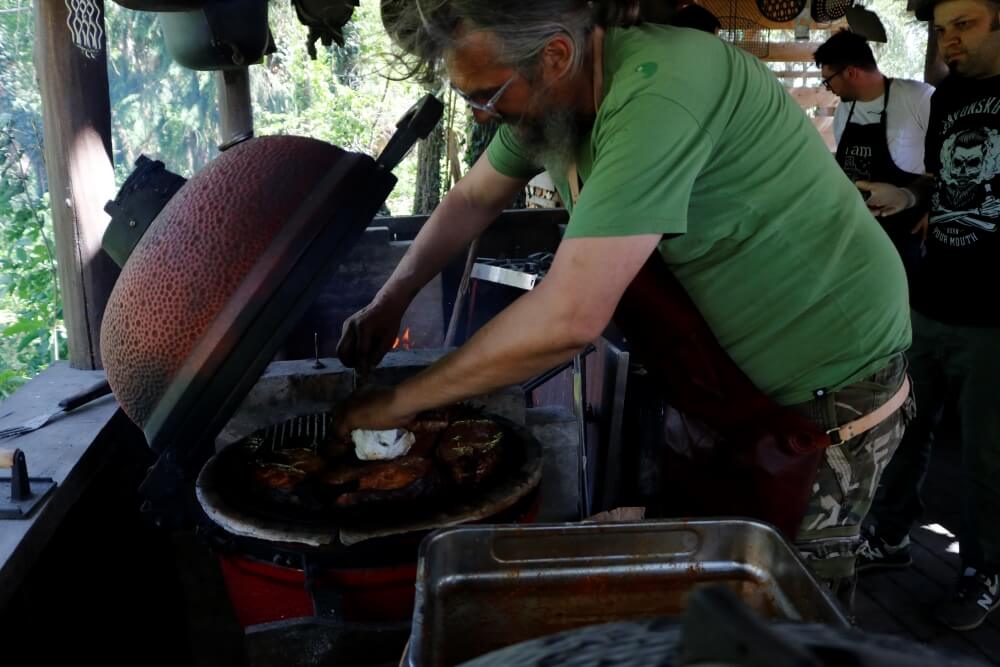 Mario Romulić tends to smoked river fish, a revelatory gastronomic experience at OPG Čudesna šuma © Marc Rowlands.
Mario Romulić tends to smoked river fish, a revelatory gastronomic experience at OPG Čudesna šuma © Marc Rowlands.
Smoked fish of Slavonia and Baranja at OPG Čudesna šuma
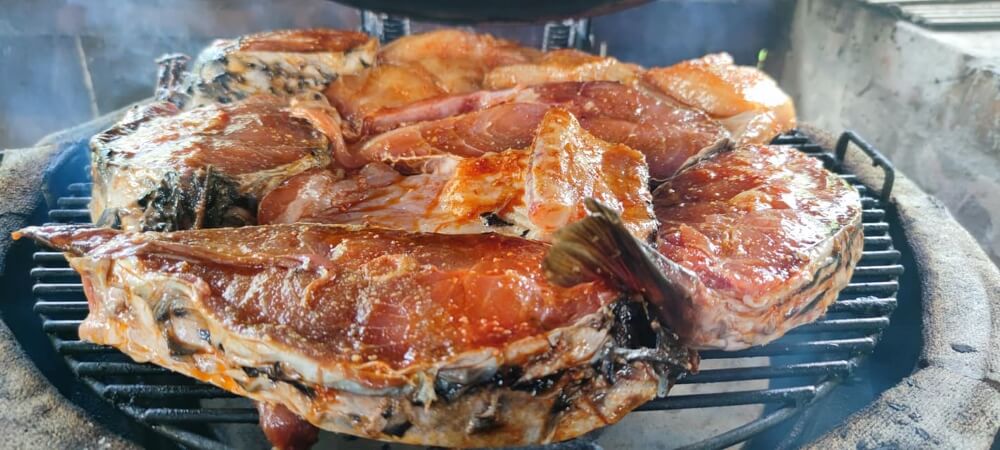 An American-style smoker, loaded with river fish. TOP TIP: A great way to stop fish sticking to the grill of your barbecue or smoker is to place them on top of a layer of lemon slices © OPG Čudesna šuma.
An American-style smoker, loaded with river fish. TOP TIP: A great way to stop fish sticking to the grill of your barbecue or smoker is to place them on top of a layer of lemon slices © OPG Čudesna šuma.
“We do have smoked fish here, but not in this way,” he says. “This is more like an American grill. I never heard of anyone trying Baranja cooking like this. Actually, I never heard of anyone nearby who has a smoker like this. The first time I tried stuka (pike) in the smoker, that was unbelievable. It's incomparable, really special.” Exquisite presentation of river fish by the enthusiastic team of OPG Čudesna šuma © Turistička zajednica Općine Bilje - Kopački rit.
Exquisite presentation of river fish by the enthusiastic team of OPG Čudesna šuma © Turistička zajednica Općine Bilje - Kopački rit.
“In Slavonia and Baranja, there are just a few ways we usually cook our river fish - carp on sticks, fish paprikash, perklet and fried fish. So, we tried something new, to expand the palette. For instance, almost nobody eats Babuška (a type of carp). They feed it instead to their pigs. It costs 5 kuna a kilo! But, if you cook it in this completely natural way, it's delicious.”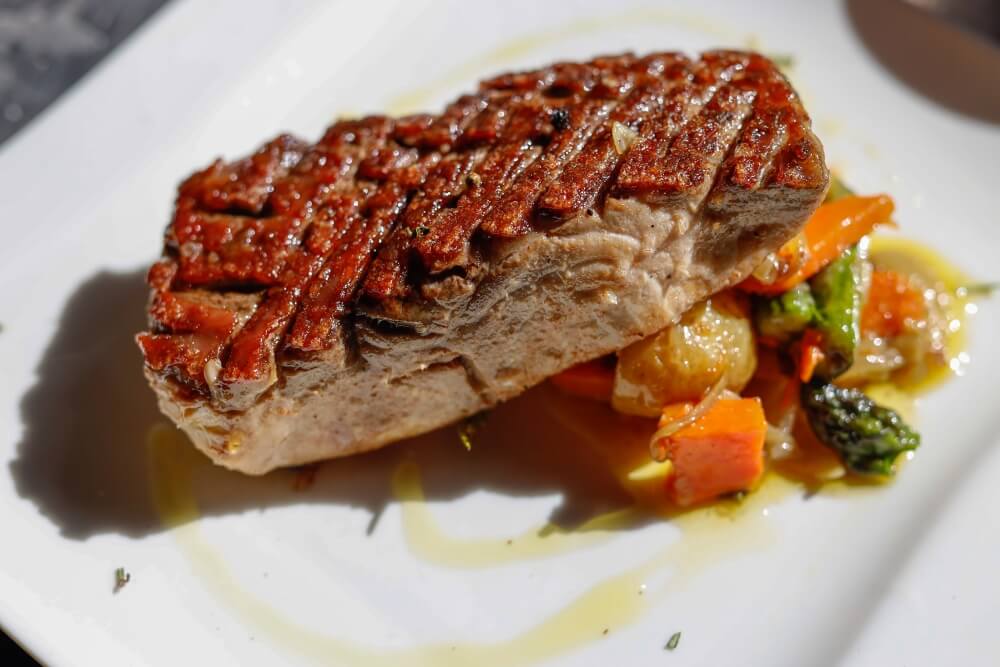 More river fish, cooked by the team of OPG Čudesna šuma © Turistička zajednica Općine Bilje - Kopački rit.
More river fish, cooked by the team of OPG Čudesna šuma © Turistička zajednica Općine Bilje - Kopački rit.
He's not wrong. Today's mountain of different smoked fish is the talk on most of the adult lips. The rich flavours surprise. Compliments and returns for second helpings ensue. Mario stands to one side, happily watching as his smoked fish secret escapes. In the future, he plans similar events based on other regional foods - Black Slavonian pig, wild meats like deer or boar. Eventually, in the seven hectares of land he owns here, he would like to expand OPG Čudesna šuma as an eco-village, with beds for visitors, a natural swimming pool and then surround it with a food forest. Big plans. It looks as though the camera may stay more permanently in the hands of his son. Because it's difficult to imagine Mario Romulić leaving his happy place and the realisation of his long-held dream.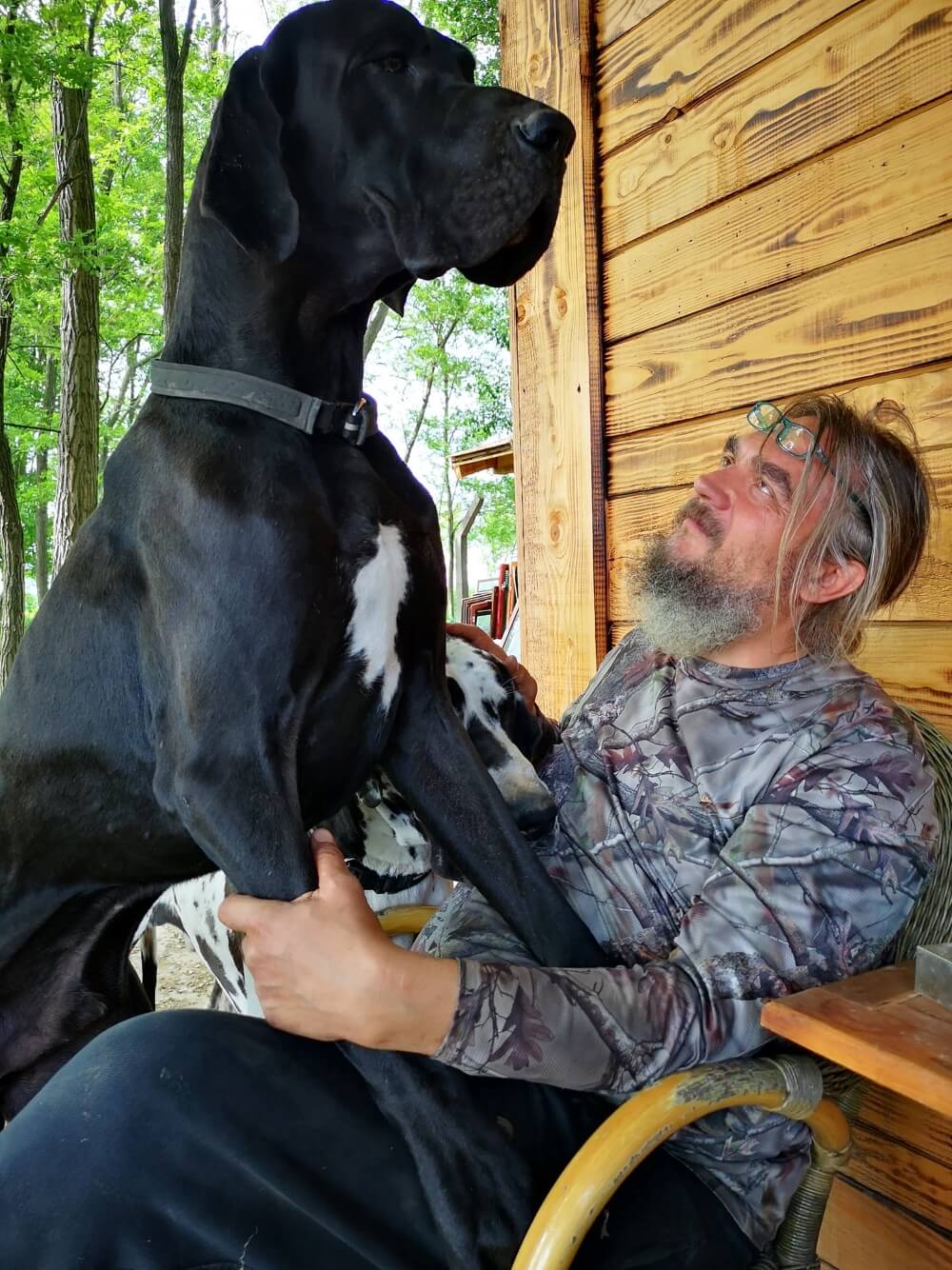 Mario Romulić in his happy place, with a friend © OPG Čudesna šuma.
Mario Romulić in his happy place, with a friend © OPG Čudesna šuma.
Both the author and Total Croatia News would like to thank the following for their invaluable help in creating this article: Ivana Jurić and the Tourist Board of Osijek-Baranja County, OPG Čudesna šuma, Mario Romulić and family, Renata Forjan and Turistička zajednica Općine Bilje - Kopački rit and Domagoj Butković of expert travel guides to Slavonia and Baranja, Kulen travel.
Feasibility Study For Hospital Project in Osijek to be Prepared
ZAGREB, 11 May, 2021 - The 35 million kuna contract on the elaboration of a feasibility study for the construction of a new complex housing the hospital centre in Osijek was signed on Tuesday in that biggest eastern Croatian city.
The document on preparing the feasibility study was signed by Health Minister Vili Beroš, the Osijek Hospital Centre head, Željko Zubčić and the representative of the consortium of bidders. As many as 30 million kuna will be provided from European funds, whereas the health ministry will cover the remaining 5.2 million.
Regional Development and EU Funds minister, Nataša Tramišak, said at the contract-signing ceremony that the co-funding from the EU funds was ensured through the "Slavonia, Baranja and Srijem" project.
She said that the construction of the future hospital centre was estimated at two billion kuna, and the exact sum would be known after the Osijek hospital centre provided full information.
Zubčić said that the new hospital centre "is a greenfield investment", and would be built at a new location. He said that the new hospital complex "is a necessity for Osijek and Croatia's east.
The elaboration of the feasibility study is expected to take a year.
(€1 = HRK 7.5)
For more about health in Croatia, follow TCN's dedicated page.
River Cruises in Brod-Posavina County: A New Tourist Product in Action
May 7, 2021 - River cruises in Brod-Posavina County are slated to be the next tourist hit in Slavonia.
Prior to the coronavirus outbreak, of the five Slavonian counties, Brod-Posavina recorded the highest growth rate of tourist arrivals, averaging 14.8 percent per year. When travel starts again, this trend should continue, and river cruising, an increasingly popular holiday, could also contribute to the growth of tourist traffic, reports HRTurizam.
To create basic preconditions for the development of nautical tourism, the Brod-Posavina County Tourist Board and the Slavonski Brod Port Authority last summer presented the Study of Sustainable Development of River Cruises in the county.
In addition to all procedures and legislation related to the construction of port infrastructure as well as prerequisites for cruise development, the Study linked the tourist attraction base of Brod-Posavina County with the locations of future ports, following examples of good practice from the environment, the structure of visitors to river cruises and motives.
"Our county lies along the entire length of the Sava River and it is time to use this natural tourist potential in the best way. After that first step, the project was implemented, so now the Port Authority is about to obtain a construction and location permit for the construction of an international passenger port worth more than 17 million kuna, and the Ministry of the Sea, Transport, and Infrastructure is working intensively on solving the critical section of the waterway - Novi Grad, which will create a precondition for the development of river cruising on the Sava," said the prefect of Brod-Posavina County Danijel Marušić.
Due to problems with navigability, the tourist potential of the Sava has been untapped for years. For comparison, on the Danube and Drava, one-day excursion tourism and navigation by excursion boats are developing, and in 2019, more than 600 river cruisers docked in passenger ports on these rivers.
The modern passenger port in Slavonski Brod should be ready by the end of 2022. It is part of a large project co-financed by EU funds, which will include the renovation of an old ship with a restaurant, meeting room, educational hall for students, and a souvenir shop. The ship, as one of the biggest attractions of Brod-Posavina County, will be anchored in the new port.
The Sava River, but also the traditional heritage as well as the valuable inhabitants of this part of Croatia known in history as border guards, inspired the new visual identity of the Brod-Posavina County Tourist Board.
Ružica Vidaković, director of the county tourist board, points out that she is extremely pleased with the largest project in the county, which will finally valorize the Sava River for tourism.
"Today, our county is known as a destination for cultural, active, and rural tourism, but also as a paradise for gourmets with indigenous flavors based on healthy local foods. Modern tourists ask for it the most. The trend is green, unspent, and honest for tourism, and these are our strongest assets. Brod-Posavina County is mostly a rural area, less than two hours away from Zagreb, and yet it is far from the crowds and asphalt, a corner of green paradise where you can experience silence. Rarely do they have that," says Vidaković.

Danijel Soldo / Ružica Vidaković, TZBPZ director
Although the rapid growth of tourist arrivals came to a halt ahead of the lockdown in March last year, she deeply believes the positive trend will continue once all this passes. She says that in crisis situations, flexibility and adaptability are the most important, so all campaigns, special presentations, and study trips for the past two years are focused exclusively on domestic guests, the only ones who can travel or come on day trips at this time of limited movement.
“We offer them new places, a new kind of adventure, a holiday without the crowds, a break in interaction with nature, a warm local story. I can experience all this on more than twenty family estates, ranches, and farms that are ten kilometers away from each other," concludes Vidaković.
For more on travel in Croatia, follow TCN's dedicated page.
EPIcentar Sequoia in Slatina to be 'Green Gates' of Slavonia
April 28, 2021 - EPIcentar Sequoia in Slatina aims to revitalize the protected natural heritage in the heart of the Slavonian town.
Did you know that the redwood tree (mammoth, sequoia) in Slatina is the only protected specimen of this species in Croatia? It was protected as one of the oldest natural monuments as early as 1967.
HRTurizam reports that the construction of EPIcentar Sequoia in Slatina aims to revitalize the protected natural heritage, redwood tree, and park located in the heart of Slatina, east of the City Hall, and increase the attractiveness of the whole site, and consequently increase the number of visitors, which will directly affect tourism development and encourage socio-economic development of the city and county.
Two buildings were reconstructed next to the mammoth. The first, larger one, has been turned into a visitor center: it consists of a reception area, reception and souvenir shop, office, and two multipurpose rooms for education and presentations, conference halls and service areas - restaurants with a capacity of up to 50 seats. In the basement, there is a kitchen and restaurant storage. In the attic of the building, there is a space to accommodate guests: a hostel with 32 beds in 8 rooms and a large living room from which a large window offers a view of the redwoods. Namely, there are currently no hotels in the city, so during important events, such as the Milka Kelemen International Music Festival, various music, scientific, economic, or religious gatherings, the problem of accommodating performers, participants, and visitors always arises.
It is important to point out that the souvenir shop will offer local entrepreneurs and student cooperatives products, which motivates the action and involvement of the community.
The second building has been reconstructed into a technically modern interpretation center. There is a space for receiving visitors, an office, and two multipurpose rooms for education and various workshops on the ground floor of the building. The central part of this building is the attic which serves as a space for visitors with a direct lookout to the redwoods. A permanent exhibition will be arranged within that space. Through a multimedia and interactive exhibition, the appearance of the natural heritage destination through history will be presented, emphasizing the sustainability of natural heritage.
A children's playground was built opposite the redwood. Gaming devices made of wood are integrated into the environment, and the youngest visitors can connect with nature and interact with the environment. The youngest will find themselves in this space because it is green and invites you to play, and adults can relax with a coffee in the restaurant during that time.
As part of this project, a mobile application was created that provides access to information about the park and the giant sequoia: it will contain a marked educational trail and data on the trees in the park, and a solar e-desk with interactive content, photo, and solar benches will be set up.
In addition to all these facilities, visitors will walk along an educational trail with boards that will educate about the natural and cultural-historical attractions of the protected park and redwood. Special tourist arrangements will be available to primary and secondary school students, people with disabilities, young people, and tourists who want an active stay in nature.
We want to attract as many visitors to this significant continental part of Croatia, which may have been too hidden so far, said the mayor of Slatina, Denis Ostrošić and added: "Good cooperation with the Health Center provides the possibility of rehabilitation, the natural environment the possibility of preparing athletes for various competitions, and the totality of the entire city center, including our museum and cinema with two screenings, and with our winemakers and winegrowers, shows that we are becoming a small destination with very nice content that will interest tourists of different orientations."
The general goal of this project is the sustainable management of public tourism infrastructure, which will increase its attractiveness, recognizability, and attendance and thus strengthen the potential of the natural heritage of continental Croatia.
Additional goals are indeed connecting with the important tourist locations of the county - with the Papuk Nature Park (25km), with the Drava story (20km), with the picnic area and Lake Orah, Orahovica (30km), to increase the destination potential and number of visitors and tourists.
EPIcentar Sequoia is opening its doors to all visitors this summer.
For more about lifestyle in Croatia, follow TCN's dedicated page.


